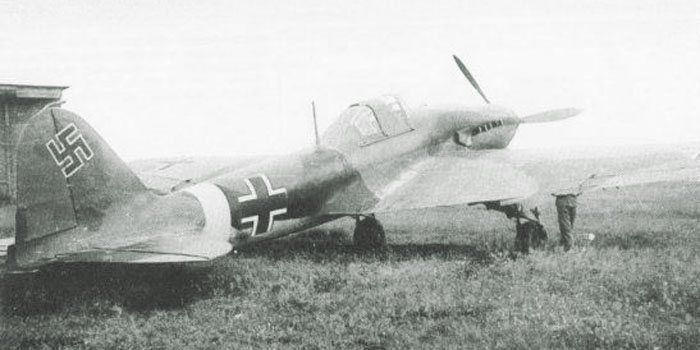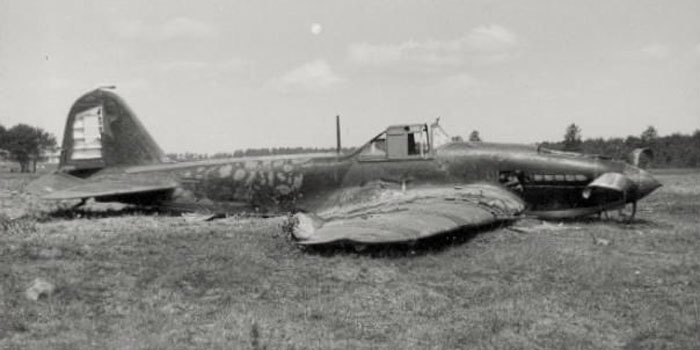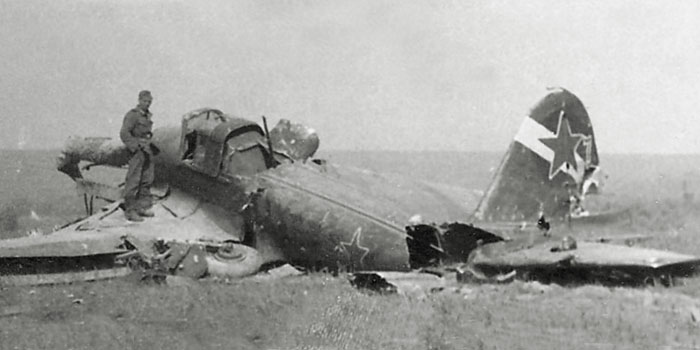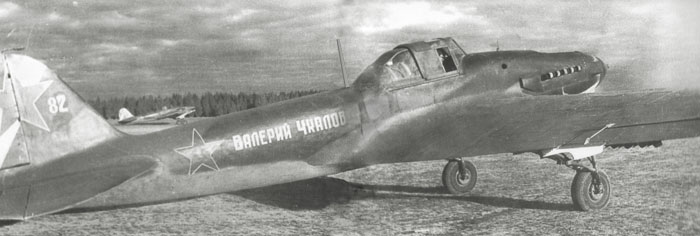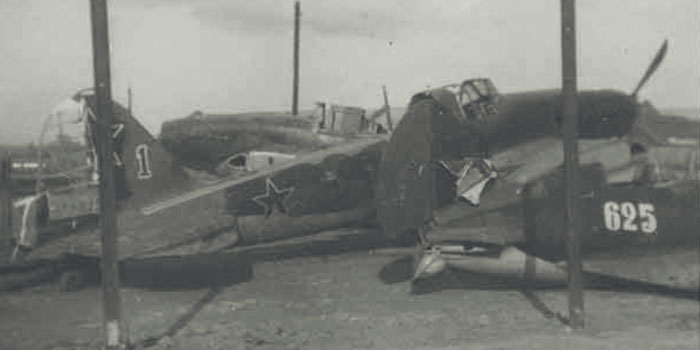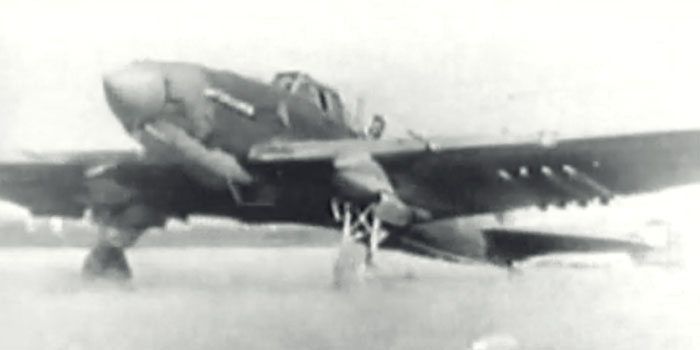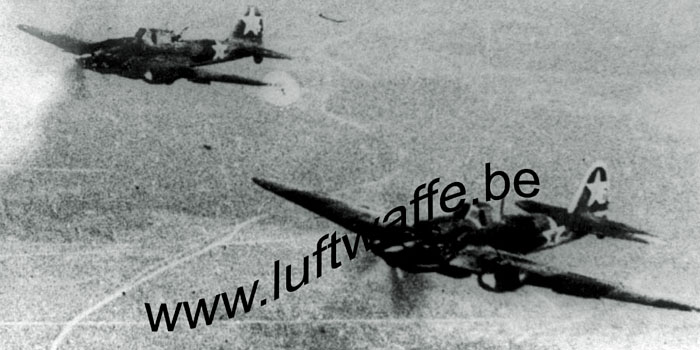The evolutive steps and facts that could be collected under the definition of Il-2 mod.1942 are:
- the adoption of a new-style straight wing armed with the VYa-23 guns positioned outside the ShKAS; perhaps this wing was already seen in late 1941, but its use was generalized in 1942 both in metallic form (by Zavod 18) and in wooden form (by Zavod 1 and 30); in case of shortage of VYa-23 guns, the smaller ShVAK could be installed as a replacement;
- the start of production of Il-2s in Factory 1, in the new site in Kuybishev where they were moved from Moscow-Khodinka; the factory built only 5 Il-2s in December 1941, then started massive deliveries in 1942 after having stopped the production of MiG-3s;
- the start of production of Il-2 in Factory 30 in Moskow-Khodinka in February 1942, in the same site previously occupied by Zavod 1.
The evolution of the type up to the end of 1942 was limited to the replacing of the aiming devices and to some refittings as the strengthening of the fuselage, the air intake filter or the addition of rear armament on some planes, till the starting of production of the following two-seater version with rear gunner around November 1942, unofficially known as Il-2M or Model 1943.

A detail of late-type metal wing introduced in late 1941. The armament consisting in VYa-23 guns, ShVAK mounted inside, and RS-82 rockets is well visible.
(From Squadron-Signal, Il-2 in action)
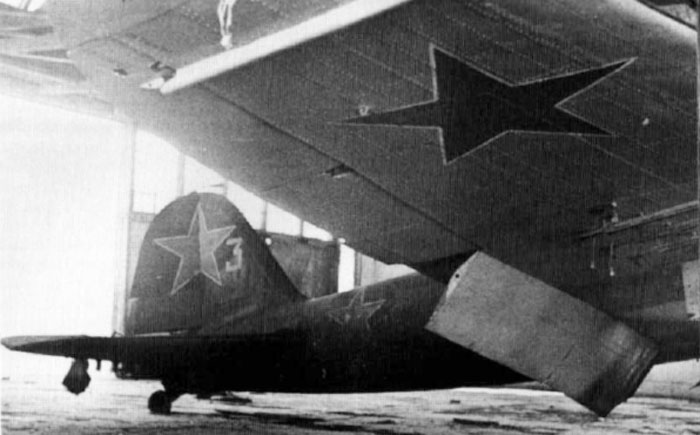
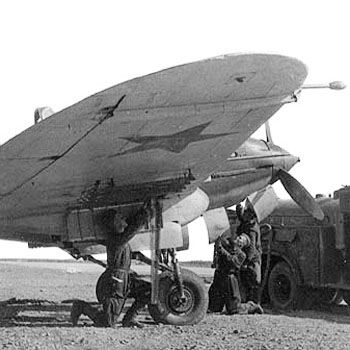 Left:
Left:
This image shows the undersurface of the metallic wing on a plane built by Z.18. The lack of the balance weight on the hinge of ailerons is a strong indication that this wing is of the new type with VYa-23 guns. Note the white outline on the star, typical of planes produced in Zavod 18 between the summer 1941 and summer 1943.
Right: another image of the new metallic wings from the bottom.
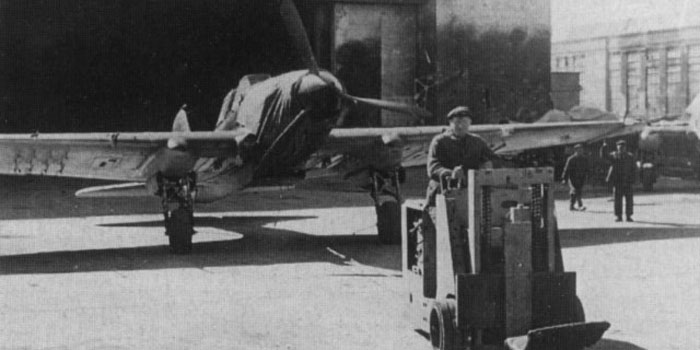
This front view of an Il-2 with the new metal wing allows to see the alignment of the rocket rails: the second from outside is aligned with the aileron edge and the pitot probe. It's the same position of the earlier metal wings of 1941. The position of the landing light has been moved outside, and now is on the left wing only.
From the small size of the barrels, one can guess that this plane is still armed with ShVAK guns.
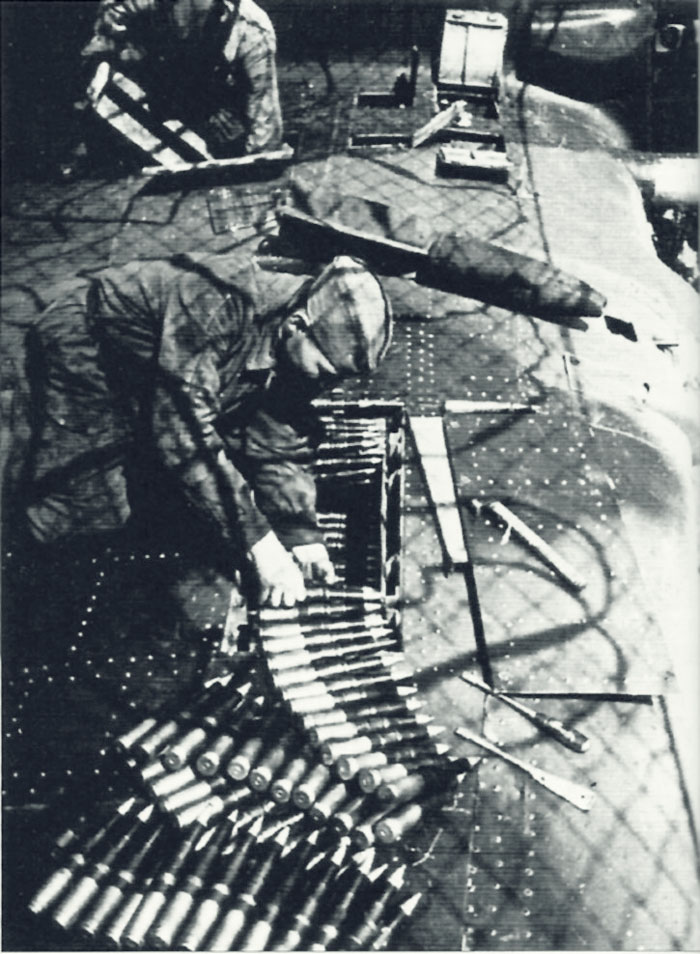
Right: loading 23 mm ammo on a plane with the new armament.
Factory 18 built planes with metal wings for all the wartime, never converting to wooden wing panels.
Below:
This drawing shows the camo scheme typical of Factory n.18 at Kuybyshev since the war outbreak, in its most usual form.
This pattern is easily recognizable for the large black amoeba as a background of the tail stars. This characteristic starts to be seen on planes built in fall 1941, while some previous Il-2s of the same factory (August-September 1941?) showed an horizontal z-shaped band instead of the amoeba.
All stars have usually a thin outline, probably in white; the stars on the tail are larger than those on fuselage, that are positioned close to the tail.
The most common variation to the camouflage of the fuselage consisted in connecting the band on the rear fuselage and the one just behind the canopy on their lower part, obtaining a sort of U on the profile views.
Usually the left wing shows three black bands more or less parallel to the fuselage, as in the NKAP template of 1941, while the right wing shows often a sort of trident or tree with its root around the inner edge of the aileron, and three branches connected to the nose and to the leading edge.
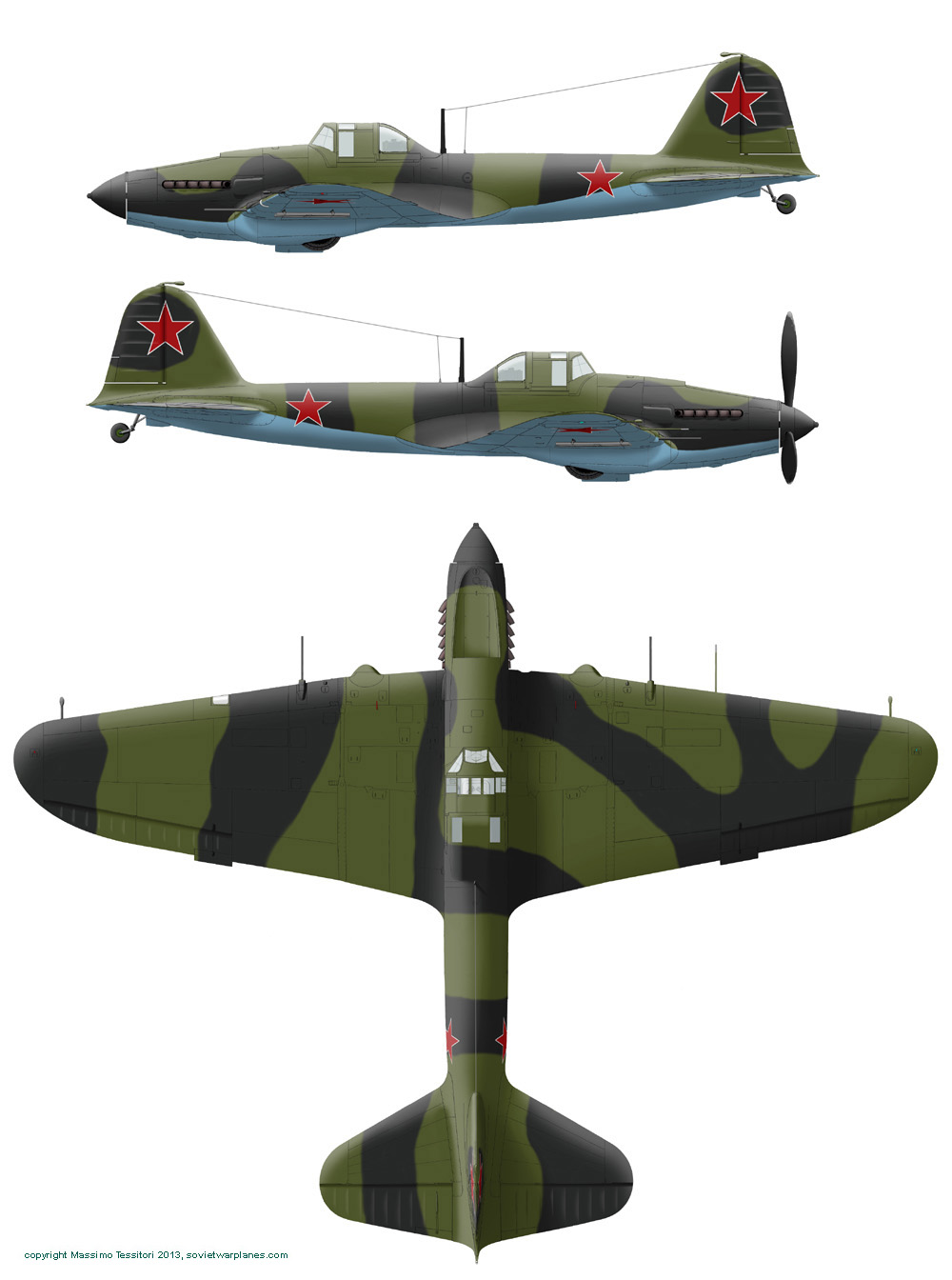
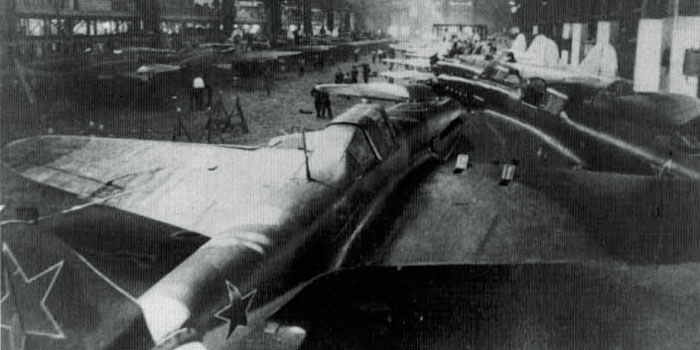
Photo of single-seater Il-2 taken in factory 18, in Kuybishev. Note the white outline around the stars, a factory mark that was prosecuted till to the introduction of the new style stars in August 1943.
The presence of white aiming lines painted on the nose suggests that the photo is of mid 1942.
The cactus-shaped black band on the right wing with 3 ends on the leading edge and one on the rear edge is another widely seen characteristic of the planes built in z.18 in this period.

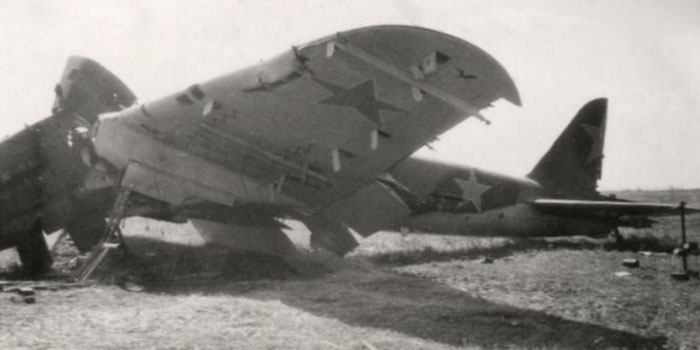
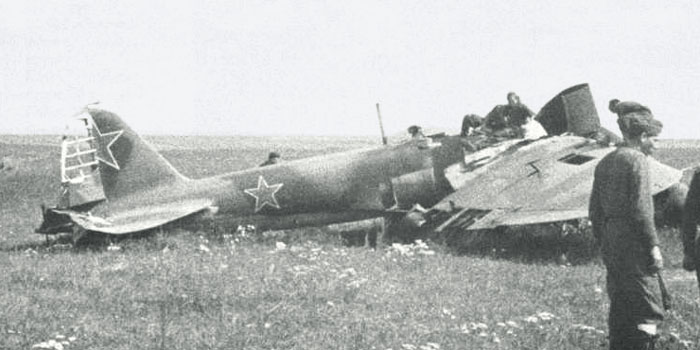
A plane destroyed on the ground near Vyazma-Gradina.
The camo scheme is a typical variant of Zavod 18, including the outlined stars, well visible on wing undersurfaces too.
Although the barrels and fairings are not visible, the shape of ammo hatches shows that this wing is the model of 1942.
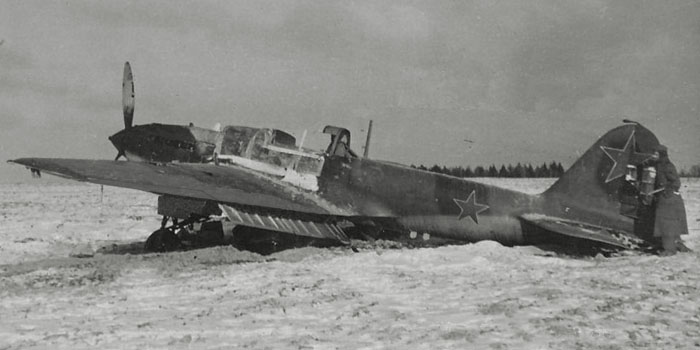
Another plane with the characteristic camo, although altered by a fire.
The camo of the left wing is visible; in this variation, it is composed of two oblique bands instead of three longitudinal ones.
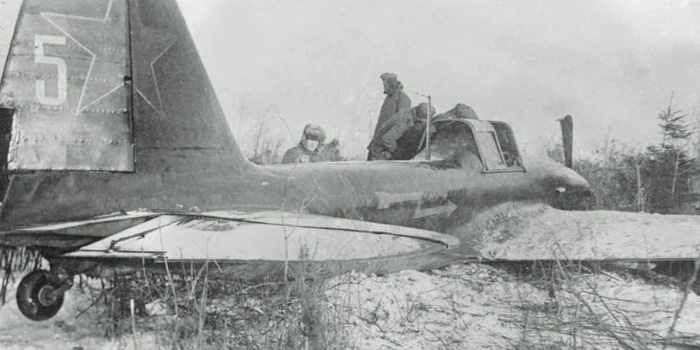

Downed Il-2 White 5, in Lognja-Cholm area, in 1942. The plane was flown by sgt. Penzin Konstantin on December 3, 1942. The white arrow is typical of 800th ShAP.
http://zarodinu.info/144gshap/lichnyi-sostav/p/p_297.html
The camouflage is scarcely distinguishable, but the look of the red stars with white outline suggests that it was produced in Zavod 18.
Another image of the dismantled plane. Here we see the small white cap on its tail.
Thanks to A. Ruchkovsky and V. Timoshenko for their help.
A reconstruction of White 5.
Click on the profile to see a larger 3-views drawing.
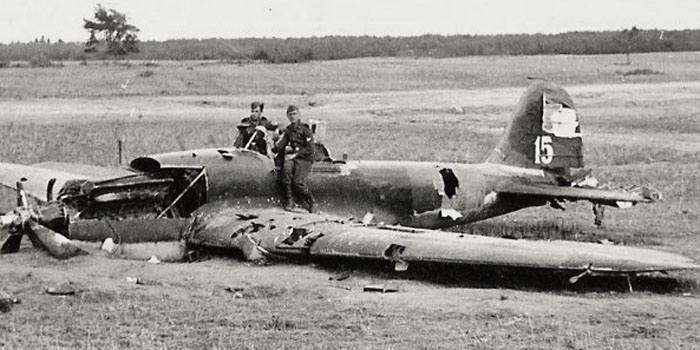

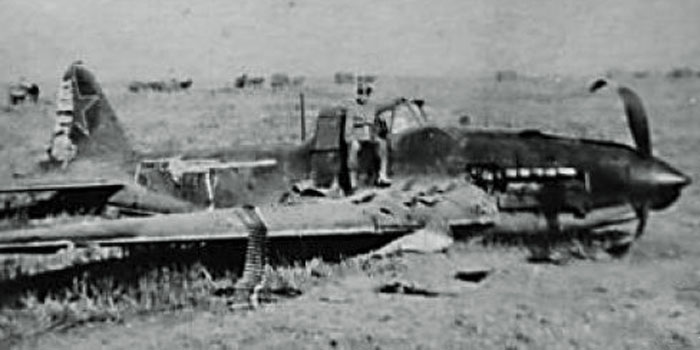
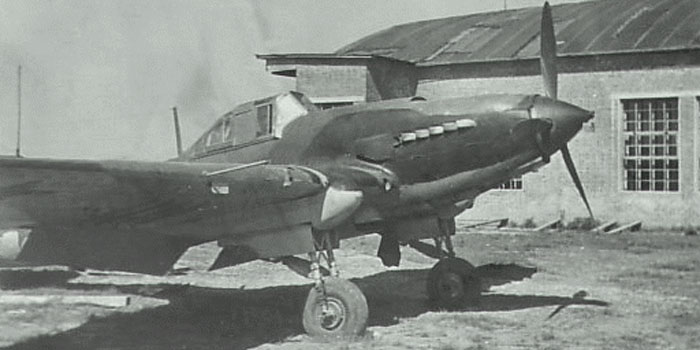
Some images of red 4.
While the more usual variant of this camo 'dotted tail' has transversal bands on fuselage and oblique on the wings, this variant has a predominantly longitudinal/oblique disposition on the fuselage too.
The late style wing is recognizable because of the lack of landing light on the right wing and for the visible gun bulges on the leading edge. Despite this, other photos show that the plane was armed with the smaller ShVAK guns due to a temporary shortage of the bigger weapon.
Below: a drawing made for the book on Il-2 of Jason Moore. The camo pattern of this plane is well documented from all the sides, and is representative of some other ones.
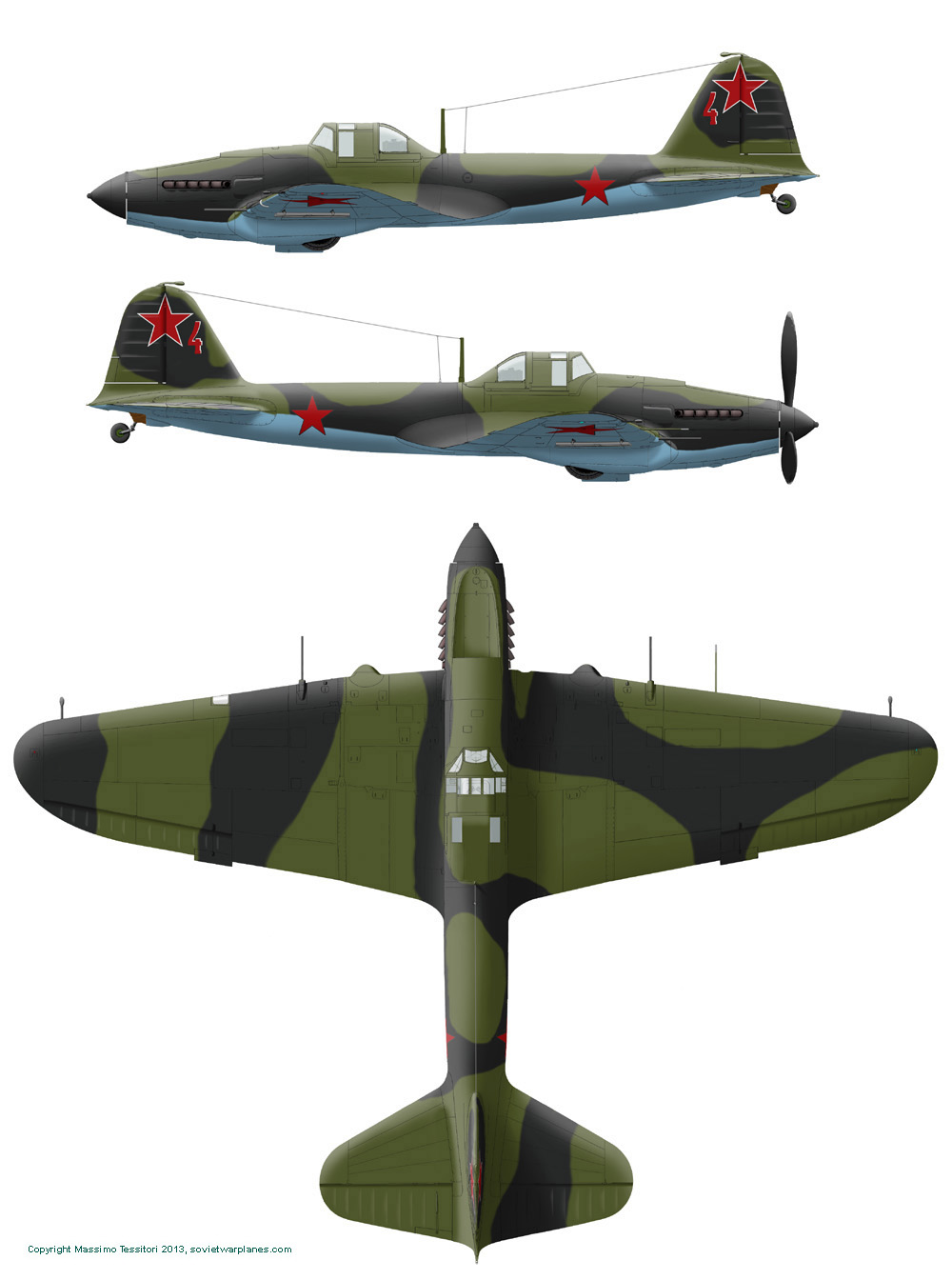
The same plane as above, Red 4, remarked by Germans. Note the green repainting on the tail and the yellow band on fuselage. A small part of the red star looks still visible between the band and the black cross.
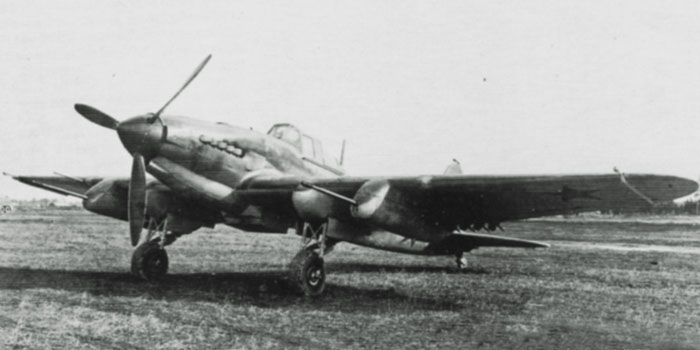
An Il-2 armed with ShFK-37 37 mm guns was built in late 1941 and even tested in combat, but the results were unsatisfactory because of the increase in weight and the lack of precision due to the strong recoil.
The plane features:
- wide underwing nacelles for the guns and their magazines
- early style metal wing without the ShKAS and ShVAK armament
- early style canopy.
Unfortunately the photo doesn't reveal much on how the plane was painted.
(From Ilyushin Il-2 by Oleg Rastrenin)
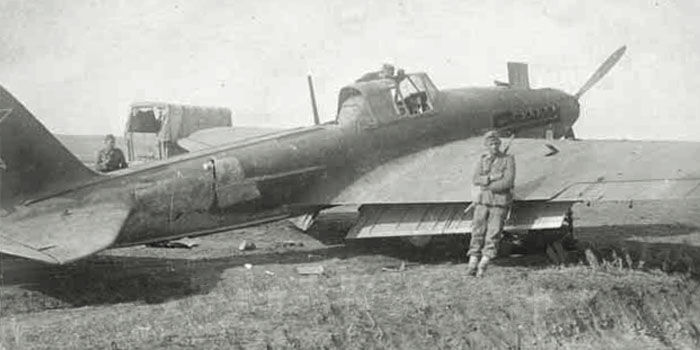
This plane (the same white 2 of photos below) shows well the external reinforcements added on the rear wooden fuselages of many Il-2s.
They were soon replaced by internal reinforcements on newly produced planes.
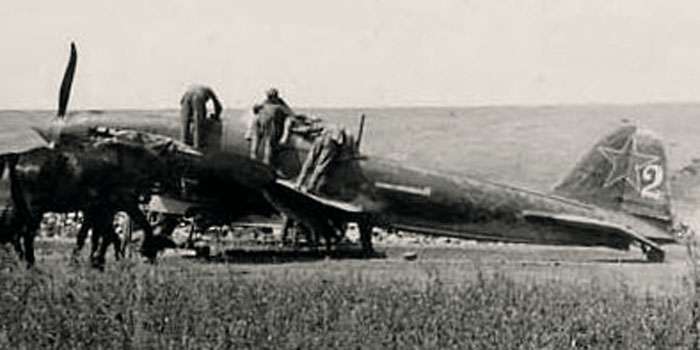
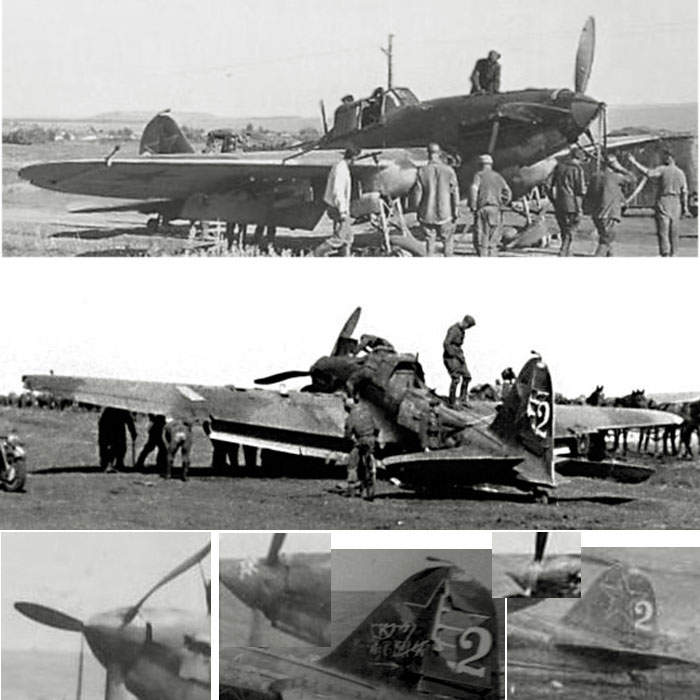
This plane, white 2, was photographed in Millerovo area, July 1942.
Lots of photos show the gradual degradation of this plane due to souvenir hunters. In many photos the plane appears wearing German inscriptions and an anchor traced with chalk on the nose; anyway we can try to reconstruct its look when still flying.
Thanks to A. Ruchkovsky and V. Timoshenko.
The plane was produced in Z.18 in late 1941/early 1942, as we can see for its metallic wing comsoles with balance weights and VYa-23 guns.
On this photo, we see a most interesting characteristic: part of the front of the spinner was panted with a light color with black contours.
One of the photos shows well the camo pattern of the wings, while the one of the fuselage is unclear and can be reconstructed only on the base of similar planes.
The spinner from the other side. Here it doesn't show any white sector, suggesting that it was limited to about 1/3 of the spinner on the opposite side; on a photo, we see that the spinner appears lighter than the cowling, suggesting that its base color could be red. A dark blurried line runs along the division between the front and rear part of the spinner.
The images show clearly the stars with thin white outline characteristic of the production of Zavod 18.
A reconstruction of White 2.
Click on the profile to see a larger 3-views drawing.
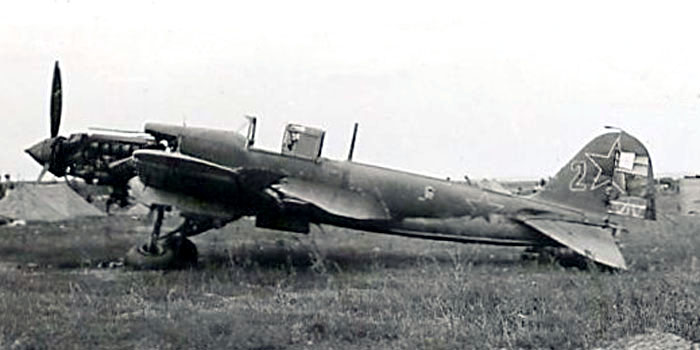
A similar plane 'red 2' features reinforcements, aiming lines on the nose and the VV-1 external aiming device.
The plane is certainly of Zavod 18, but the camo is unrecognizable, it could even look overall green. More likely, it's a black-green plane with the rear fuselage and stabilizator repainted green and blue after some repair. The red star on the fuselage could have a silver outline.
A reconstruction of Red 2.
Click on the profile to go to a larger 3 view drawing.

Good color photo of a wreck of Il-2. The camo pattern of the tail could suggest that of Factory n.18, but the lack of white or silver outline on the stars seems against this identification. Note the wooden fuselage (revealed by the yellowish color where the fabric skinning is skipped away) and the longitudinal reinforcements suggesting that the plane was built around October 1941.
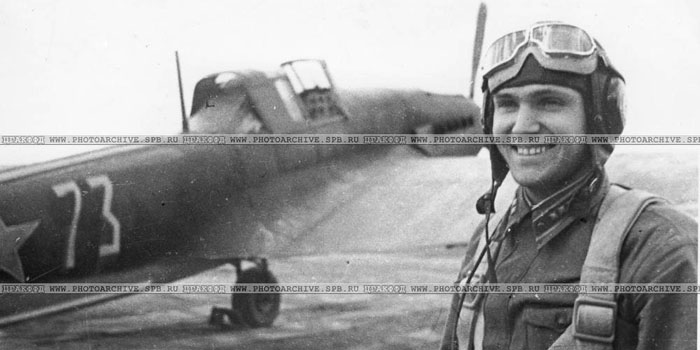
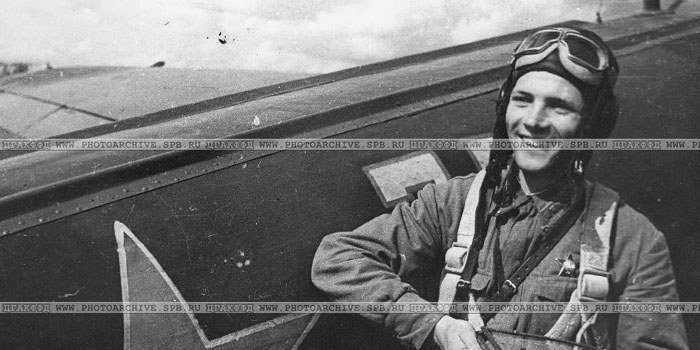
First photo: pilot N.N.Kirov of 174 ShAP poses close to plane White 73 in May 1942.
The plane, built in early 1942 in Z.18, has the stiffeners to strenghten the rear fuselage.
Second photo: pilot G.M.Mylnikov poses close to the same plane. This detail allows to see the thin (red?) outline around the white number. The outline around the star seems silver. The stiffeners seem painted before being installed on the plane.
It's likely that this plane had a colored (red?) front of the spinner as other planes of the same unit.
Images: spb.photoarchive.ru via V.Timoshenko
A reconstruction of White 73.
Click on the profile to see a wider 3-views drawing.

Other planes of 174 ShAP, probably in 1942.
Image: spb.photoarchive.ru via V.Timoshenko

White 77 was probably built in Z.18 (as suggested by the balance weight on the wingtip) in 1942 and then updated with fasteners on the rear fuselage. The photo was probably taken in late 1942 or in 1943.
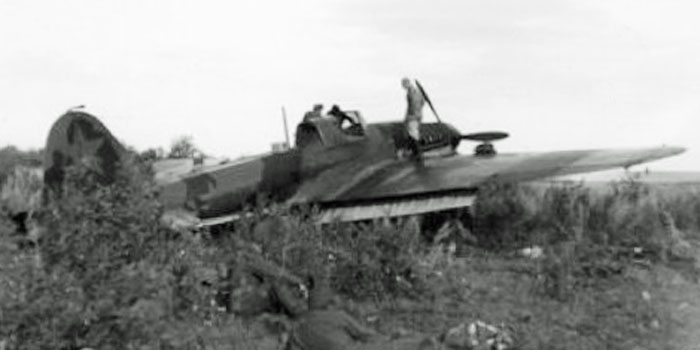
This plane is of difficult identification: the camouflage collects elements of many factories, with the fuselage resembilg that of z.18 but the wing recalling Z.30; the red stars don't show the characteristic white outline of Z.18, but the position looks coherent with this.
The wings seem metallic, because it seems to see the balance horns and their connection to the ailerons; this identifies the plane as built in Z.18.
Fasteners are visible on the rear fuselage. A red 4 seems vaguely visible on the lower part of the rudder, close to the star.

White 15 looks an usual plane made in Z.18 in early 1942, with the reinforced fuselage.
The fabric skinning with the red star on the fuselage has been removed by souvenir hunters, and the yellowish underlying putty is visible.
This unusually camouflaged plane is particularly interesting, even if not very representative.
The plane was delivered with a factory black-green camouflage, on which the light (brown?) dots and possibly light bands on wings and tail were added in a second time.
The plane seems to show remains of a deleted white oblique band on its rudder.
(thanks to AR)
A reconstruction of Red 8.
Click on the profile to go to a page with a large 3 view drawing and further photos.

Another Il-2 featuring a dotted rear fuselage and white outlined red stars, probably on the base of a black-green camo on the style of Factory n.18, not recognizable on the photo. The plane features a wooden rear fuselage with external reinforcements and probably a metallic early type wing.
(thanks to AR)
A reconstruction of Red 7.
Click on the profile to go to a page with a large 3 view drawing and further photos.
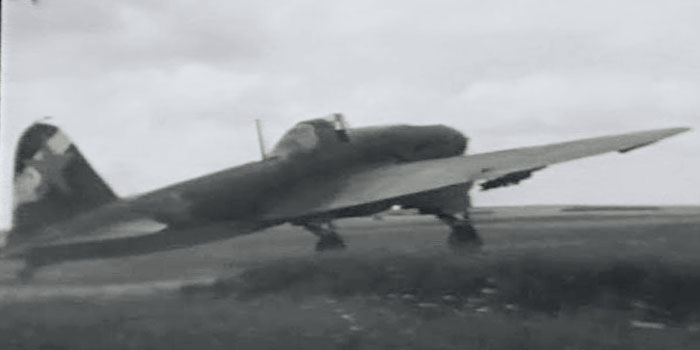
This plane (blue 12?) hasn't unusual mottles, but the white band on the tail is the same and probably belongs to the same unit.
As the one above, it's built in Zavod 18 (as can be deducted because of the balance weights at the wingtips) and seems to have the same reinforcing ribs.
Il-2 white 82 entitled to Valeriy Chkalow, the HSU test pilot died while testing the first I-180.
The plane shows the VV-1 external aiming device introduced in mid 1942, but its camo pattern is unusual for a plane of Z.18.
The white band on the tail is characteristic of this unit.
The plane on the background seems to show the same slogan, but it wasn't on all the planes of the same unit.
Image from Red Stars of Geust, Keskinen, Stenman, ed. Apali
Profiles of White 82 and White 91, another plane of the same unit.
Click on any of the profiles to go to a page with large 3 view drawings and further photos.
Although the wings are dismounted, Red 1can easily be identified as an Il-2s built in Factory 18.
Note the reinforcement stripes and the light dots on the back of the fuselage. This plane shows many resemblances to those above and could be of the same unit.
A reconstruction of Red 1.
Click on the profile to go to a page with a large 3 view drawing and further photos.
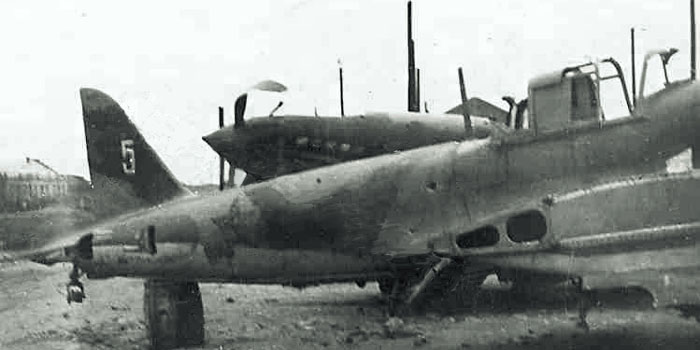
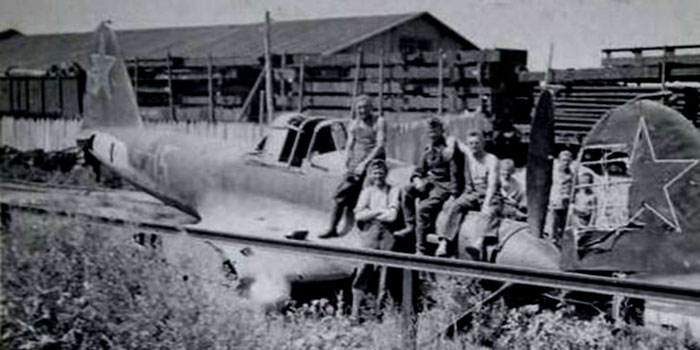
Wrecked Il-2 'double 15'.
The plane is built in Z.18, as recognizable for the white outlined stars.
Interestingly, number 15 is reported both on the fuselage and on the rudder.
From http://propjet.ucoz.ru/forum/2-60-6
This profile of 'White 1' is obtained from a photo of a downed plane that shows clearly that the rear fuselage (and, in minor extent, other parts of the plane) was texturized with both light and dark dots of unknown colors. The stars are in the style of Zavod 18.
Click on the profile to see a larger 3 view drawing.
This Il2 appears in a movie, probably taken during the tests of ROFS-132, a shrapnel/explosive variation of the RS-132, that is bigger than the normal RS-132.
The movie shows the plane with metallic wings, external reinforcements on fuselage and an unusual camo pattern, perhaps due to a complete repainting after the remotion of a winter paint.
A reconstruction of this plane.
Click on the profile to go to a page with a large 3 view drawing and further photos.
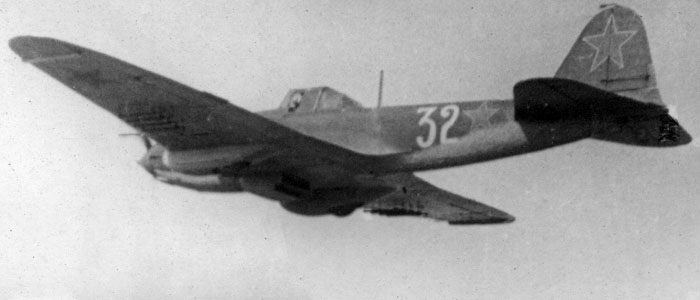
Plane n.32 of 65th ShAP is certainly built in Zavod 18.
This plane appeared on a photo on the newspaper "Krasnaya Zvezda» n. 213 of 10.09.1942.
The camo pattern looks similar to that of Red 4.
Thanks to V. Timoshenko.
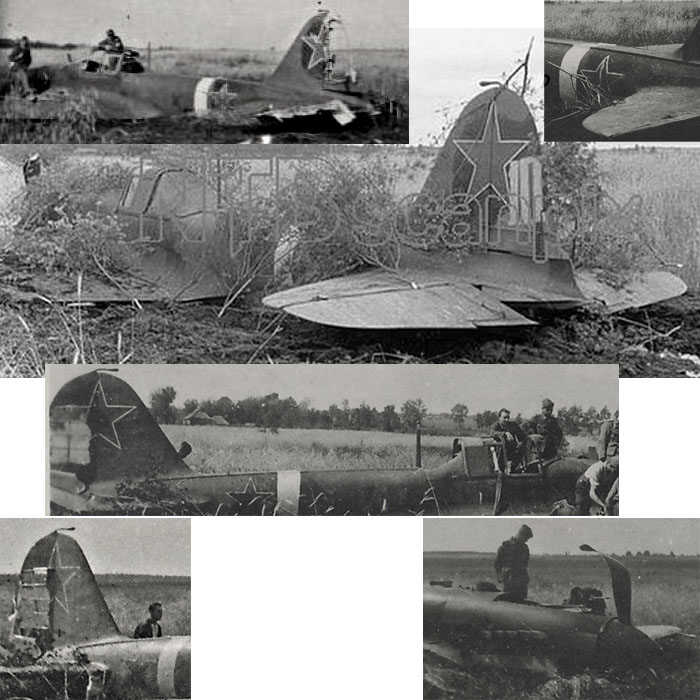
Il.2 white 10 of unknown unit, probably in mid 1942.
The plane is clearly built in Zavod 18 and has metallic wings, almost surely with VYa-23 guns. Note the stiffeners on the rear fuselage and the aiming lines painted on the nose, apparently without the VV-1 aiming device.
The white band around the fuselage and the oblique shape of the bort number are noteworthy.
Image: NTBscanpix and Tusslamabad, via Vitaliy Timoshenko.

A reconstruction of this plane.
Click on the profile to see a large 3 view drawing.
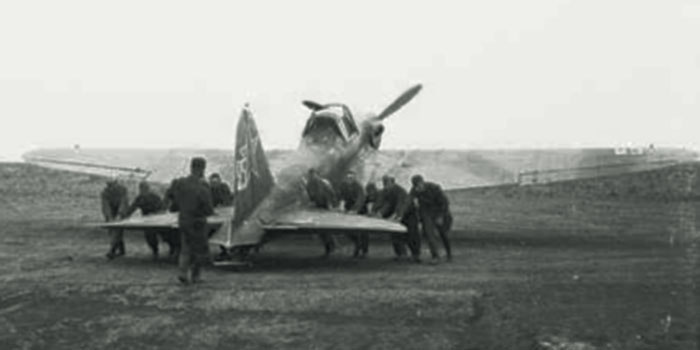
 Il-2
n.25 of Ivan Petrovic Ostapenko, 7 Gv.ShAP, Donbass 1942.
Il-2
n.25 of Ivan Petrovic Ostapenko, 7 Gv.ShAP, Donbass 1942.
http://www.warheroes.ru/hero/hero.asp?Hero_id=14098
The plane is clearly with metallic wings, built in Z.18 as recognizable also for the white outlines of the stars. The n.25 is reported on the right wing too.
The plane looks worn and subject to considerable repaintings, including a ligher shade, probably of green, that looks added on ; the contrast between green and black on the stabilizer and rudder looks scarce. The 25 on the rudder appears a bit different between the images, that probably weren't shot in the same time.
Thanks to V. Timoshenko for informations.

A reconstruction of White 25.
Click on the profile to go to a larger 3 views drawing.
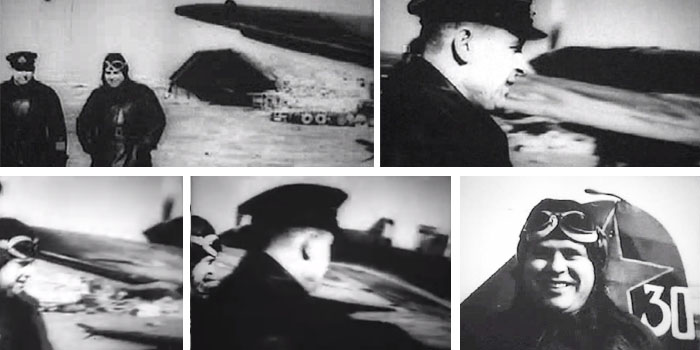
Plane n.30 of 18 PShAP, Sevastopol, 1942.
http://www.youtube.com/watch?v=EDn0h6M_ysg 18:47 - 18:55
The pilot is HSU Aleksey Antonovich Gubry, that was deputy commander of this navy regiment in 1942.
http://www.warheroes.ru/hero/hero.asp?Hero_id=5490
Although fragmentary and uncomplete, the photo allows a reconstruction of the look of the plane: built in Z.18, mod.1942 early, white 30; the black-green camouflage was modified with the addition of (presumably) light brown blotches on the wings (and fuselage?). The image gives the idea of a red cap on the tail, but the black amoeba extends over it, so probably it's just a joke due to the high sun.
Similar-looking plane was still serviceable with the same unit (renamed 8 GvShAP) in the same location in 1944.
8gvshap-24al/8gvshap-24al.html
Thanks to Vitaliy Timoshenko for images and informations.

A reconstruction of this plane.
Click on the profile to go to a page with a large 3 view drawing and further photos.
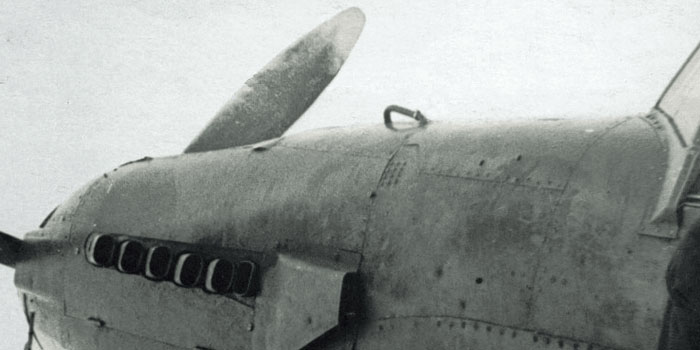
An image of a device that appears on the nose of some Shturmoviks of Zavod 18, probably in the first half of 1942. Its use is unknown, it could be some aiming device for bombing.
Below: a collage of images where the device appears (from A. Ruchkovsky)
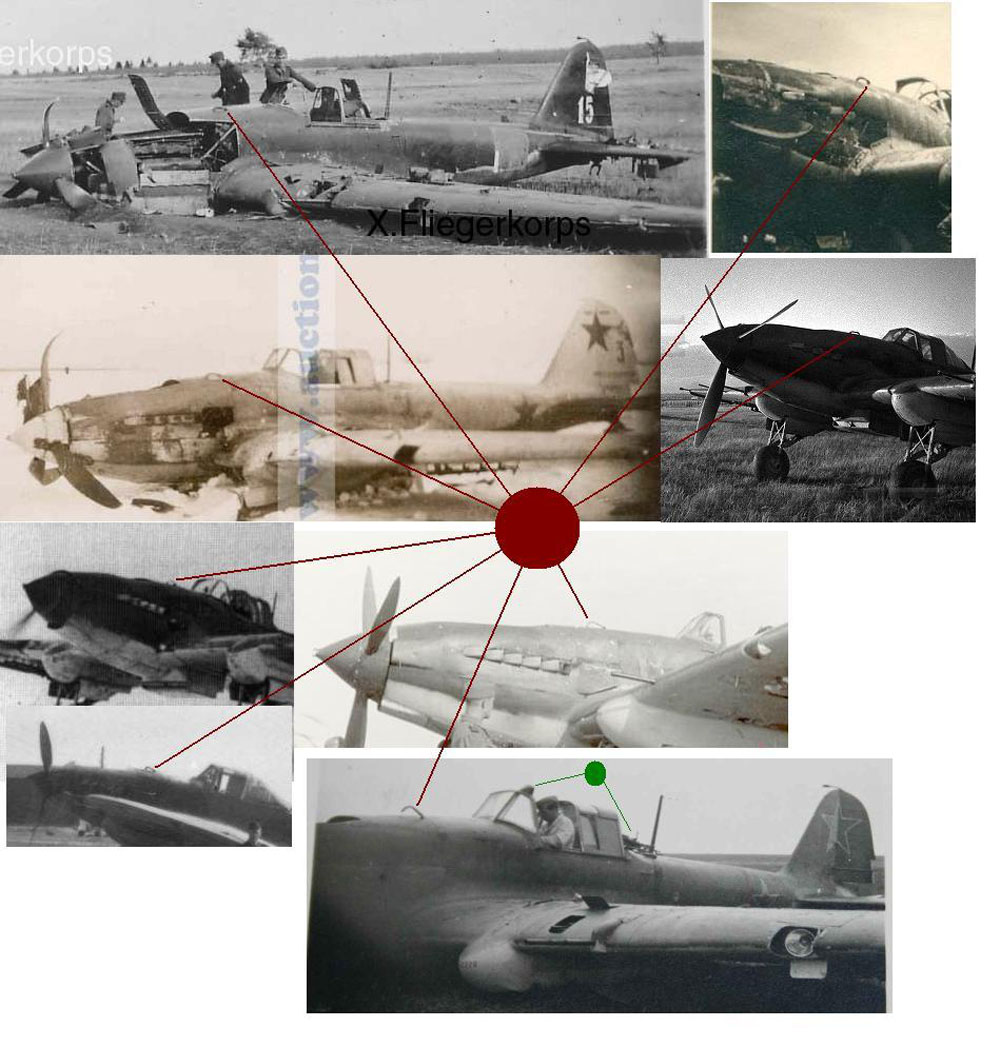
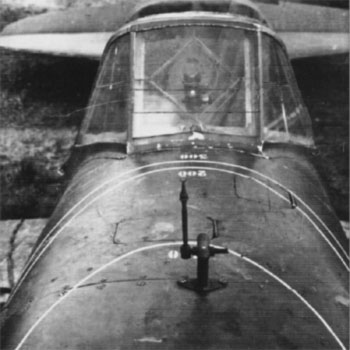
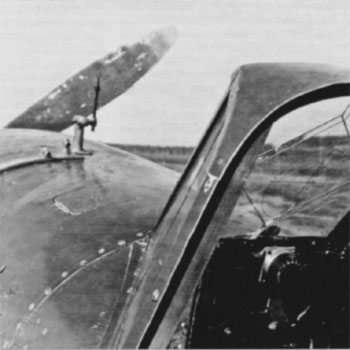
Two images of the VV1a metal aiming device, that replaced the previous PBP-1b on August 1942; so, it can be seen only on late single-seaters.
The first photo seems to show both the VV1- mounted outside and the PBP-1b mounted inside the canopy; the second image shows that the PBP-1b was absent, replaced by an aiming cross on the armor glass.
Note the white curved lines painted on the nose, that help to aim for the release of free fall bombs. They were introduced around August 1942 or later, and are rarely seen on single-seaters.
(From Ilyushin Il-2 by Oleg Rastrenin)
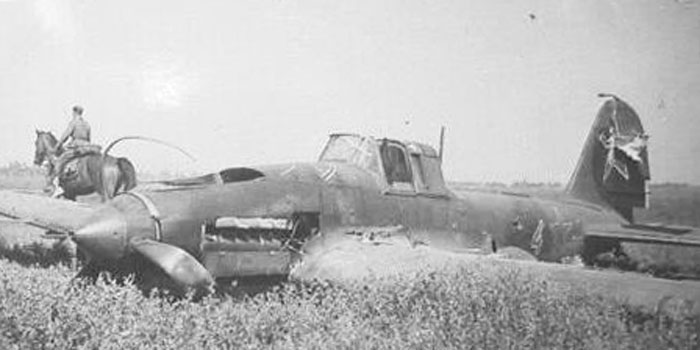
Red 4 looks a plane of Zavod 18 because of the style of its red stars and the angular window of the landing light. It is provided with bomb aiming lines painted on its nose, but there is not any other aiming device. The tip of the spinner seems red.
Note the reinforcing ribs on the rear fuselage.
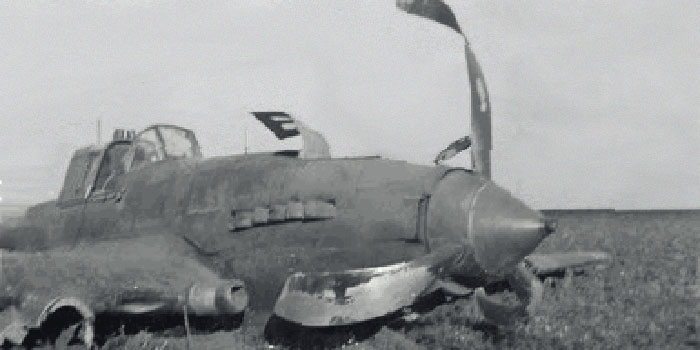
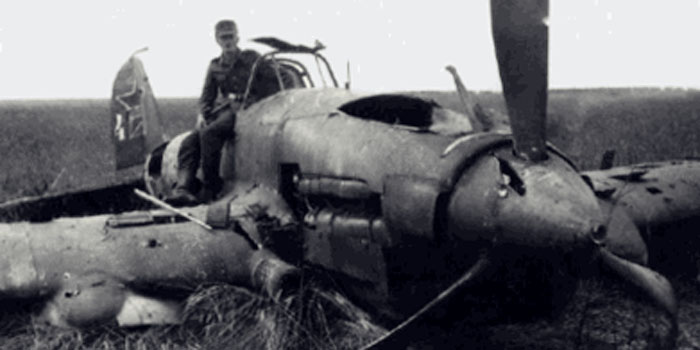
Plane White 4 of Zavod 18 with air filter at the wing root. Note the VV-1 aiming device and the aiming lines painted on the nose.
The start of the mass production of Il-2 with filter has probably to be dated to September or October 1942, shortly before the start of the production of the Il-2M.
Zavod 1 began the production of Il-2s after having moved from Moskow-Khodinka to Kuybishev. Only 5 Il-2s were built in December 1941, but after the the stop of the production of MiG-3, the mass production of Shturmoviks started in January 1942.
They had the new style of wooden wing outer consoles.
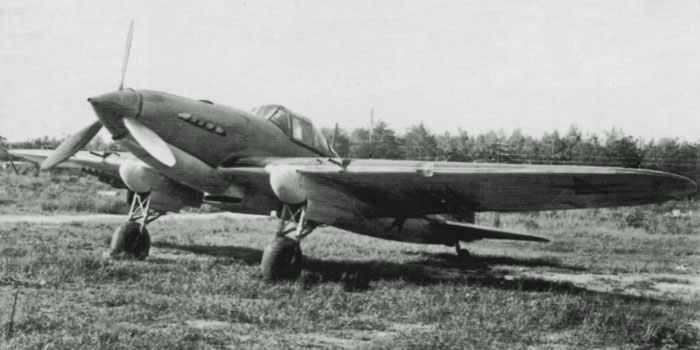
The wooden wing was introduced in 1942 in Zavod 1 and 30 (not in zavod 18). The wooden wings can be distinguished from the late-style metal wings because of the absence of balance weights at the wingtips, for the rounded shape of the landing light and, at a close view, for the absence of the most of panel lines.
Unfortunately, the photo doesn't allow to distinguish the camouflage and code of this plane, so it's unclear if it is from Factory n.1 or 30 (that looks more likely because of the standard exhaust pipes and the style of star on the fuselage).
The small size of the barrel suggests that it was still armed with ShVAK guns because of a shortage in production of the VYa-23, that were the standard for the model of 1942.
(From Ilyushin Il-2 by Oleg Rastrenin)
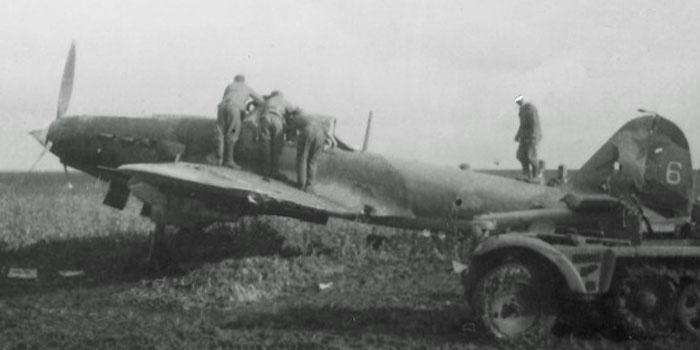
The first batches of Il-2 produced by Zavod 1 at the beginning of 1942 were characterized by 4-stacks exhaust pipes. The first pair of stacks were long as those of MiG-3, and collected the fumes from two cylinders each: the third one was single, and the last one was short as on all other Il-2s.
Il-2 white 6 (apparently with a thin red outline) features the 4-stacks exhausts and the VYa-23 guns in wooden wing consoles.
The camo pattern seems not the same of other photos of planes from Zavod 1, probably it's an early unstandardized one.
The star on the fuselage is not clearly visible; however I guess that Germans have fired and removed the fabric layer just in correspondence of the behated red star.
A reconstruction of White 6.
Click on the profile to go to a larger 3 view drawing.
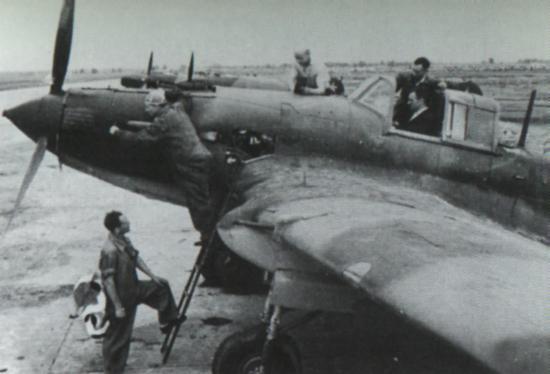
A photo of an Il-2 taken in Factory n.1 at Kuybyshev. Note the shorter barrels of the ShVAK guns on the wooden wings.
The camo and the exhaust stacks are only partially visible; they could
resemble as the one of the photo above. 
Right: : a detail of 4-stacks exhaust pipes. The rear one is very short as on usual Il-2s, and is not clearly visible here.



A couple of planes built in Zavod 1 with 4-stacks exhaust pipes.
The camouflage of n.21 conforms with the later, typical pattern of Zavod 1, as the planes below.
Plane 21 is flown by Captain Anton Karasev, deputy squadron commander in 57 ShAP of Baltic Fleet Aviation, made HSU on 14 June 1942.
http://www.warheroes.ru/hero/hero.asp?Hero_id=5960
Below: other images of the plane of Karasev, confirming the red star on the fuselage and the usual look of the wing uppersurace.
Thanks to Vitaliy Timoshenko for the informations.
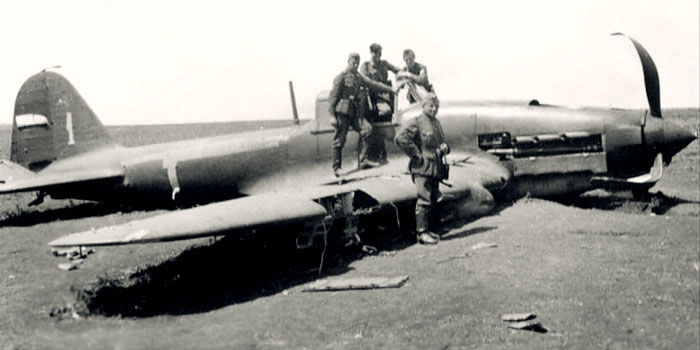
White 1 is clearly recognizable as a plane built by Zavod 1 because of its typical exhaust stacks.
Camouflage and markings are nearly undistinguishable in the most part of photos of it, but it looks the typical one of this factory.
A reconstruction of White 1.
Click on the profile to go to a page with a large 3 view drawing and further photos.
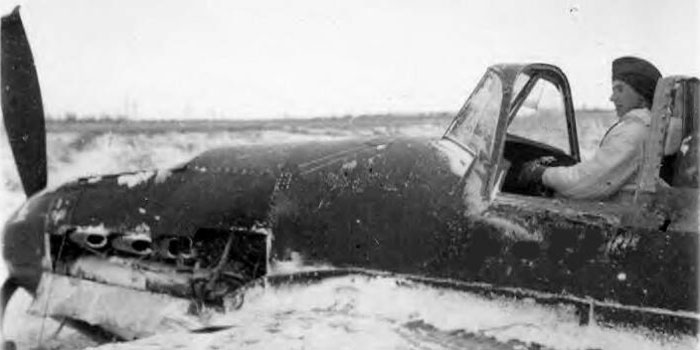
A detail of White 1 of Zavod 1. As one can see, it has the 4-stacks exhaust pipes and some aiming lines (in yellow?), but not yet the VV-1 aiming device on the nose.
The photo show a plane remarked by Germans and painted in a light color, almost surely yellow to avoid the strong risk of friendly fire. They had at least two planes painted in yellow and differing only for small details.
This plane has the rare 4-stacks exhaust pipes briefly built by Zavod at the beginning of 1942 and was armed withy ShVAK guns in wooden wings.
A reconstruction of this plane.
Click on the profile to go to a page with larger 3 view drawings and further photos of some Il-2s remarked by Germans.
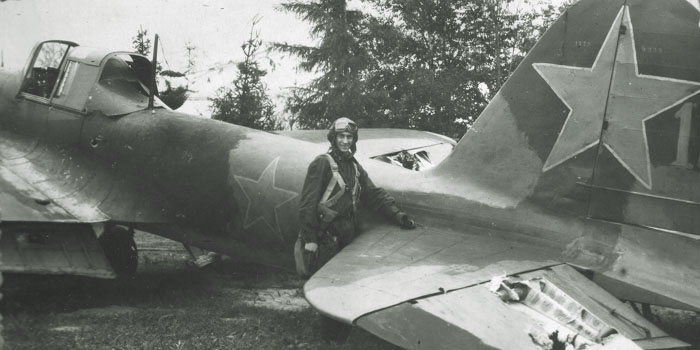
Il-2 of jr. lieutenantTitovich, 872 ShAP, at the return of his first combat mission in summer 1943. The plane landed safely although hit by 5 37 mm shells.
About the camouflage, it looks similar of that of the plane of the previous photo, but it has clearly been modified on the field by brush, probably for some repair.
The plane is of late production, with VV1a external aiming device probe visible on the nose, wooden wings, and possibly with an air filter at the intake. The white contoured stars are unusual on the planes built in factory n.1, being typical of the planes of factory n.18.
(Oleg Korytov)
Below: a drawing of Red 1. Note the typical camo pattern of Zavod 1.
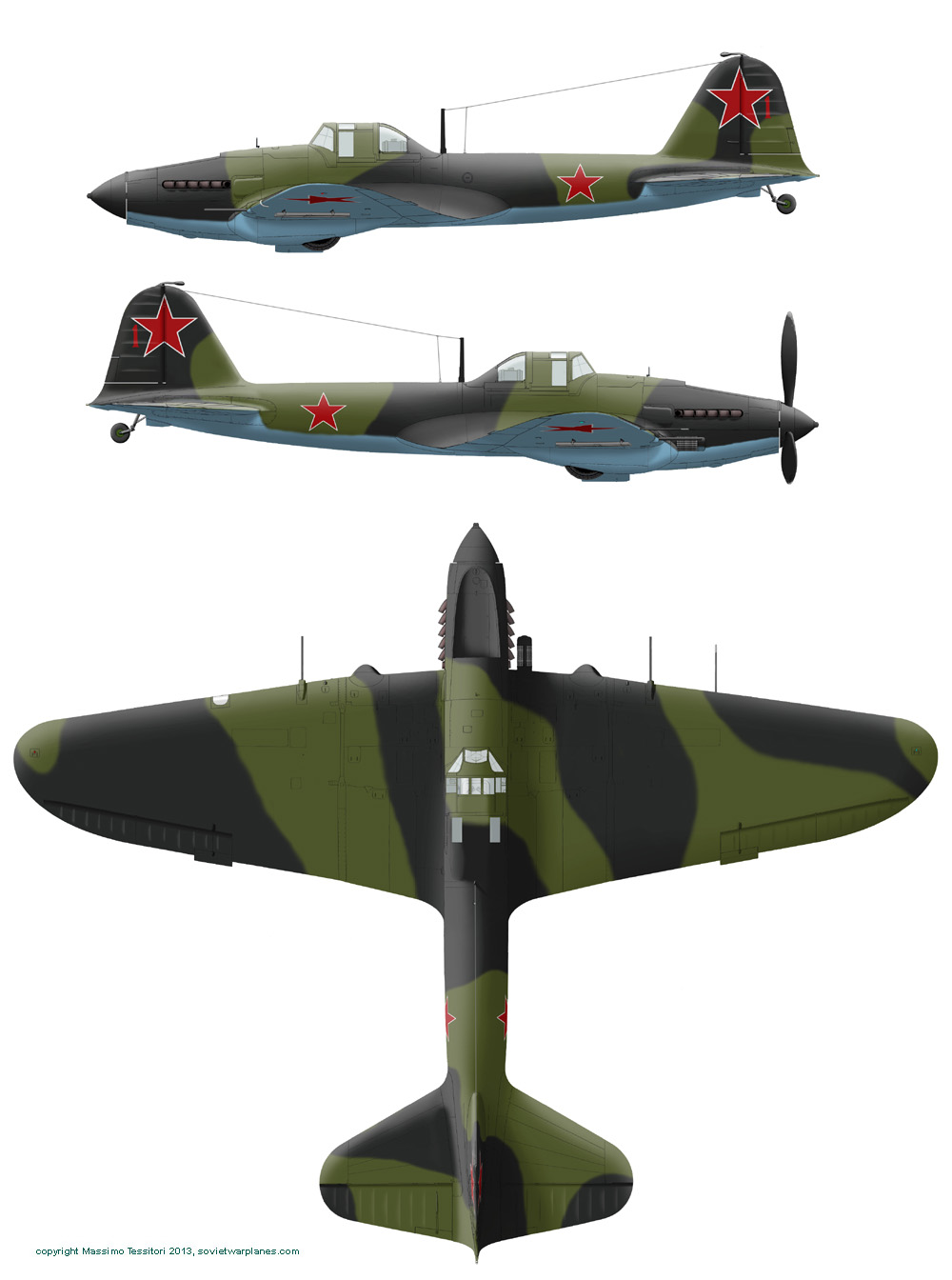
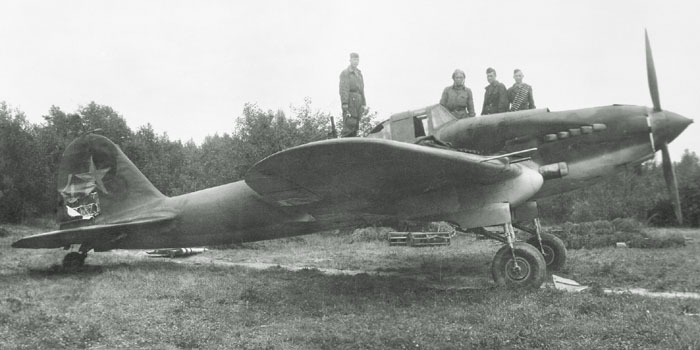
A damaged Il-2 of 872 ShAP in 1943.
One can see the wooden wing (recognizable for the absence of balance weights), the smaller barrels of the ShVAK guns instead of VYa-23 and the air filter at the intake on the right wing root, introduced in January 1943.
The camo seems a variation of that of factory 1 in consideration that, according to the text, the planes were usually taken at Kuybyshev where factory 1 and 18 were located, but planes of Factory 18 usually had metal wings.
(Image via Oleg Korytov)
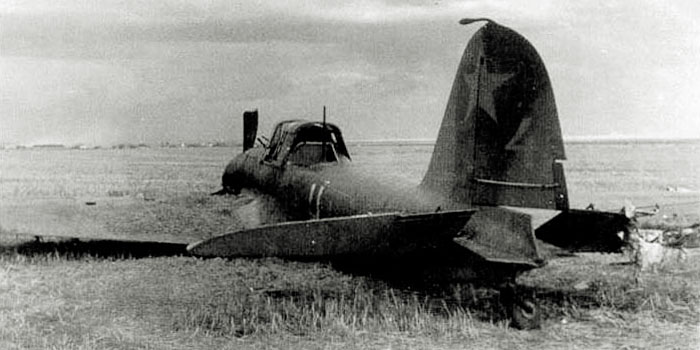
This plane is very similar to the one above, but not the same. Here we see the typical vertical band on the left side of the tail that was the factory mark of many Il-2s built in Zavod 1.
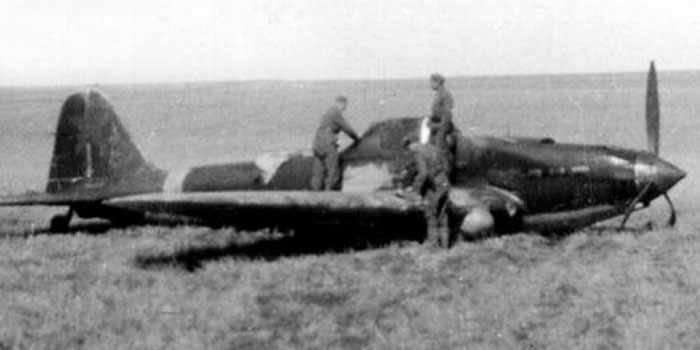
This plane looks representative of the production of Zavod 1 in the second half of 1942.
The characteristic camo is recognizable on the tail and rear fuselage.
It has wooden wings (distinguishable for the absence of the balance weights at the wingtips) and has the VV-1 external aiming device and aiming lines for bombing painted on its nose.
The origin of the lighter blotch on the medium fuselage is unknown; it could be a remain of a winter camo (if the photo was shot in 1943) or some other field camo or repair.


Il-2 White 22 of unknown unit after a belly landing. presumably in 1942.
The spinner looks black with a red tip.
White 22's fuselage is covered by dust and mud because of its belly landing; the tail shows clearly the typical painting of zavod 1, while the few that can be seen of the camouflage under the mud splashes allows only a partial reconstruction of it.
The VV-1 aiming device and three white aiming lines are recognizable on the nose, so the plane was probably produced in mid 1942.
The short barrels protruding from the wings suggest ShVAK guns instead of VYa-23, in line with what is expected from planes of Z.1 in 1942.
The plane shows two interesting characteristics: both the front of the landing gear nacelles are painted with a light color, possibly light blue; besides there is a light part on the right stabilizer, that looks a repair made with thin metal sheet or adhesive tape over a war damage.
Some photos show the plane with large parts of its fabric skinning of the fuselage removed, probably in correspondance of the fuselage red stars; this looks a confirmation of their presence even if they can't be seen in the photos due to the mud splashes.
Thanks to Vitaliy Timoshenko for his help.

A reconstruction of plane 22.
Click on the profile to go to a larger 3 view drawings.

Plane White 18 seems produced by Zavod 1: pattern and position of the star on the fuselage look compatible enough.
The plane looks built in mid 1942, being equipped with VV-1 external gunsight and probably with white aiming lines.

A belly landed Il-2 in winter 1942-43.
The plane is characterized by an oblique white band on its tail, suggesting that it could belong to 606th ShAP, 214 ShAD.
An interesting characteristic is the double numeration on the tail, 109 and 8, probably due to the replacing of the rudder with the one of another plane.
This plane is produced in late 1942 probably in Z.1, and features the dust filter at the wingroot intake, the MV-1 external aiming device and three aiming lines painted on the nose.
It's impossible to know if the plane was armed with 20 mm or 23 mm guns, because the weapons seem removed on all available photos.
A reconstruction of this plane.
Click on the profile to go to a larger 3 view drawings.
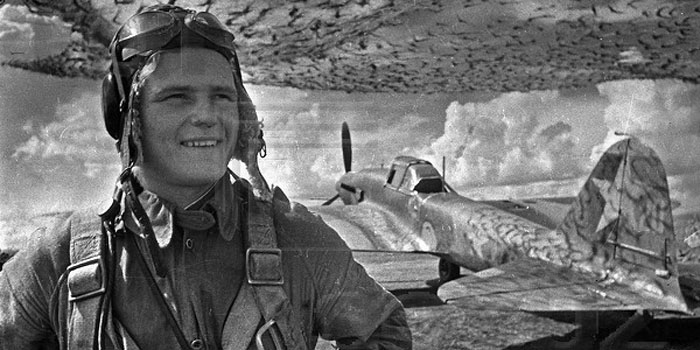
Lieutenant Georgiy Dvornikov of 617 ShAP distinguished himself in the battle for Kharkov. August 1943.
http://www.warheroes.ru/hero/hero.asp?Hero_id=14013
His plane looks built in Z.1 in mid/late 1942, showing the characteristic camouflage, modified with some light repainting, (unclear if repairs or modifications of the camo); the dark lines are the shadows of the overlying net.
The plane shows a red (?) tail cap and a red 20 on the rudder.
Thanks to V.Timoshenko for the links.
Zavod 30, moved in Moskow-Khodinka, started the production of Il-2s in February 1942. Photos of single-seat Il-2s built by this factory are relatively rare.
The planes were characterized by wooden wing consoles, as those of the planes built in Zavod 1.
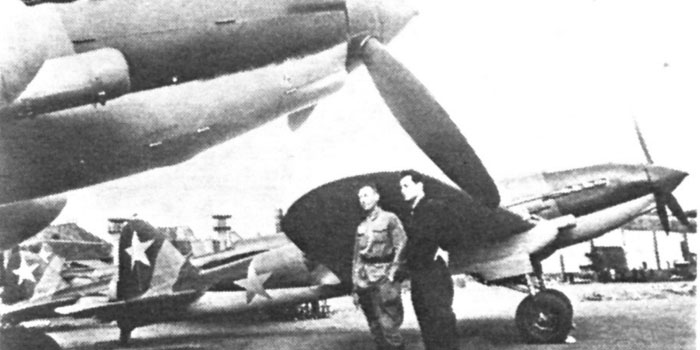
Some planes built in Zavod 30 in late 1942, just before the transition to the production of the two-seater Il-2M (model 1943).
Note the dust filter already installed on the right wing root.
The camouflage appears very uniform, and similar to the one with black 'balls' on the fuselage sides briefly utilized by Zavod 18 in July 1941; in this case, these 'balls' are absent, but they appear painted on many stocks of Il-2 of this factory.

A plane of Zavod 30 in flight. The sharp camo and the reinforcements on the rear fuselage are evident.
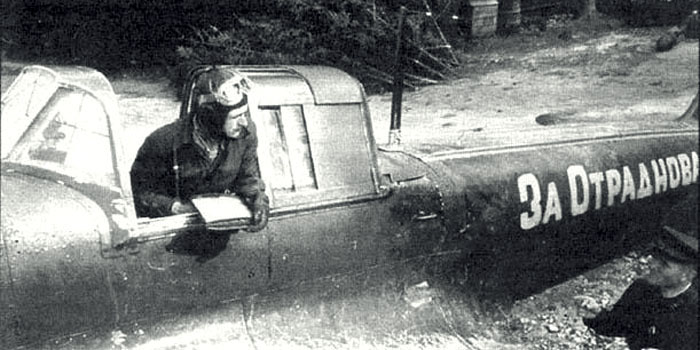
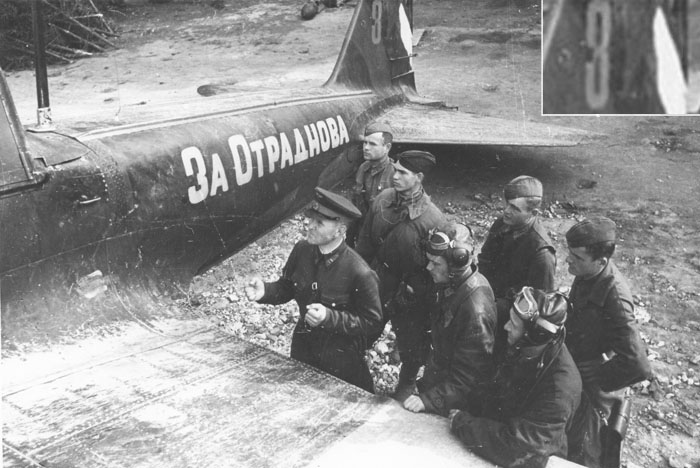
The plane yellow (or blue?) 8 was flown by Pilot A.V. Chuvikov, of 606th ShAP, 214 ShAD.
The slogan says 'Za Otradnova', that means 'For Otradnov'.
Otradnov and Chuvikov both were pilots of this unit, both KIA (autumn 42 and spring 43 respectively).
Here the number on the tail is visible. At a first look it seems 3, but enlarging the photo one can see that it was 8, confused by a dark rectangular dot of uncertain origin (probably a repail or a defect of the photo).
The tail shows the typical camo pattern of Zavod 30. Consequently, the wings have to be wooden.
The stiffeners on the fuselage are clearly visible.
Note the oblique white band of the tail that characterized many planes of this regiment.
The color of the fuselage has a not uniform look, it is unclear if this was maculated with another camo color (as 'red 8' apparently of the same unit) or simply worn.
A reconstruction of 'Za Otradnova'.
Click on the profile to go to a page with a large 3 view drawing and further photos.
Reconstruction of red underlined 21, of which only images of wrecks are known. From what can be seen of the camouflage, it looks a plane built in Z.30 with wooden wings.
Click on the profile to go to a larger 3 view drawing.
An higher resolution version of this artwork will be published on the book on Il-2 of Jason Moore.
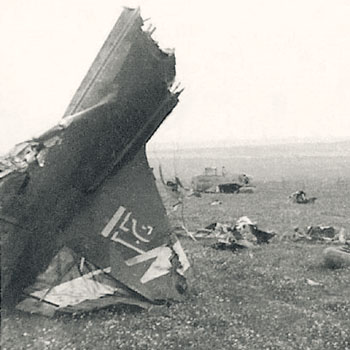 The white
band and other resemblances to known photos suggest that the plane could
belong to 606 ShAP of 214 ShAD.
The white
band and other resemblances to known photos suggest that the plane could
belong to 606 ShAP of 214 ShAD.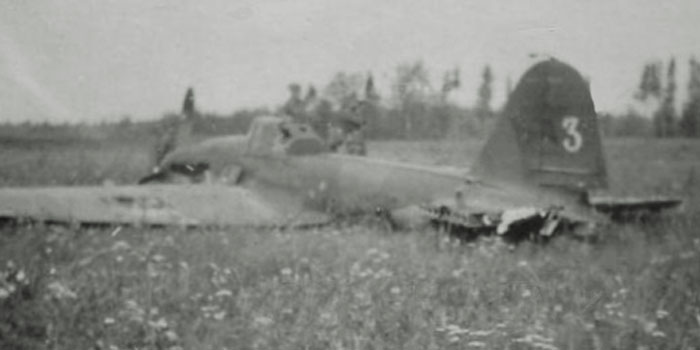
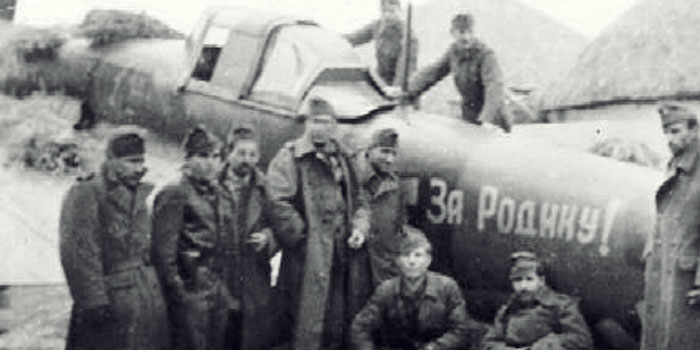

The plane of Alexey Arsentevich Rogozhin of 763 ShAP in spring 1942, Kalinin front.
The inscription means "Avenge Major Kozlova". Major Peter P. Kozlov was killed in action on 07/03/1943; Rogozhin did this inscription on his IL-2 a couple of days after this.
http://www.warheroes.ru/hero/hero.asp?Hero_id=12877
From an interview, the inscription is described as made with light blue paint, and is well visible in a photo that I can't publish for copyright reasons. The number, of which only the top is visible, is 13, apparently with the same shade. The photo shows also an huge red star with very thin and irregular white outline, and light irregular parts on the camo; all that is explainable as if the plane was painted with washable white paint during the winter, and the huge star was painted with permanent red paint over temporary white distemper. When the white layer was washed off during the spring, the star remained, aside some white remains. The original star of Zavod 30 was then deleted with black or green paint, and the 13 added on; later, the slogan was added on too. All what is not visible on the photo was drawn as on usual planes of Zavod 30 built in late 1942 that equipped this unit.
Thanks to Vitaliy Timoshenko for the informations.
A reconstruction of this plane. Click on the profile to see a 3 views drawing.
This Il-2, probably photographed in 1944, is interesting because combines elements of 1942 (the plane itself and its camouflage) with other ones of late 1943/44 (the marks). The white outline on its tail and some traces of winter finish make this plane even more interesting. The base camo looks that of Zavod 30..It's possible, but not sure, that this plane was equipped with a dust filter on the carburetor's intake.
Image from www.luftwaffe.be
A reconstruction of this plane.
Click on the profile to see a 3 views drawing.
Zavod 381 started to build Il-2s before the war outbreak, but had soon to be evacuated.
Plant 380 and 381 were merged into one and moved to Nizhny Tagil in the Urals.
This factory produced only 27 Il-2s in 1941, and only 243 up to October 1942, then turning to La-5s.
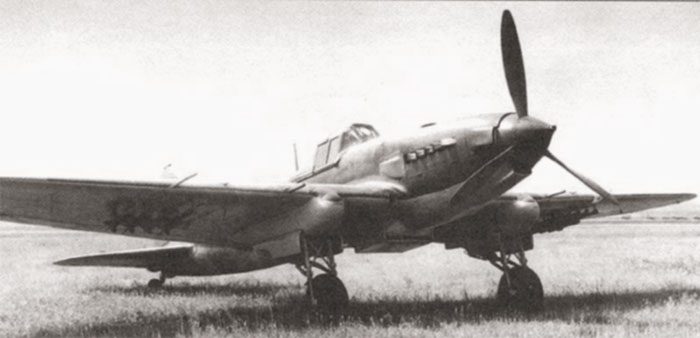
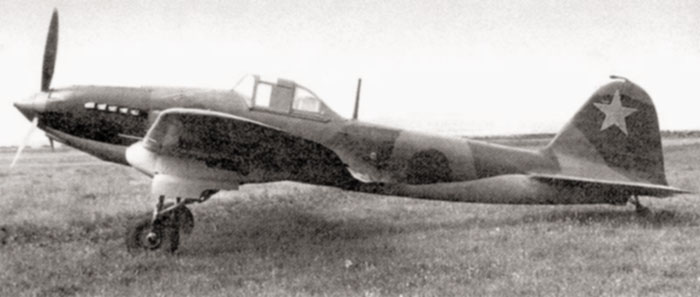
Photos of plane No.381355, built in Zavod 381 in spring 1942. Photos seem taken at the factory, not at an operative unit.
Seems that all Il-2s produced in Z.381 preserved the style of wing of 1941, with ShVAK guns positioned inside of the ShKAS positions, metallic wings probably with fabric-covered ailerons (as deductable for the ansence of their balance weights). Strangely, photos show the absence of the balance weight at the wingtips that were preserved in the metallic wings of planes built in Z.18; despite this, the better photos we have of this plane seem to show the panel lines denoting metallic wings. This was probably an evolution of 1942, because an earlier plane built in the same factory shows both the balance weights under the ailerons (presumably metallic) and at the wingtips. Besides, the landing light appears installed on the left wing only, as standard in 1942, and not on both as on planes of 1941.
The canopy is armoured as those built in 1942, with rear armour, top armour, extended side plates.
The photo shows the presence of white aiming lines on the nose, but not of the VV-1 external aiming device; it's unknown if this was introduced before the end of the production of this factory.
The rear part of fuselage was wooden.
This plane shows a white outlined star on the tail, as those painted in Z.18 (but moved forward), but no stars on the fuselage sides.
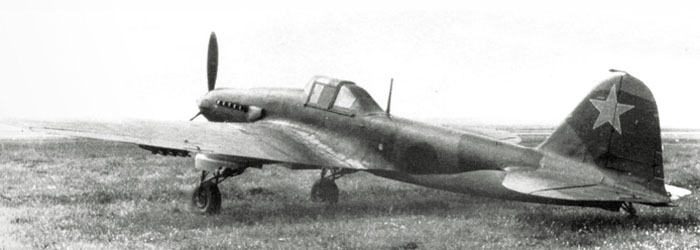
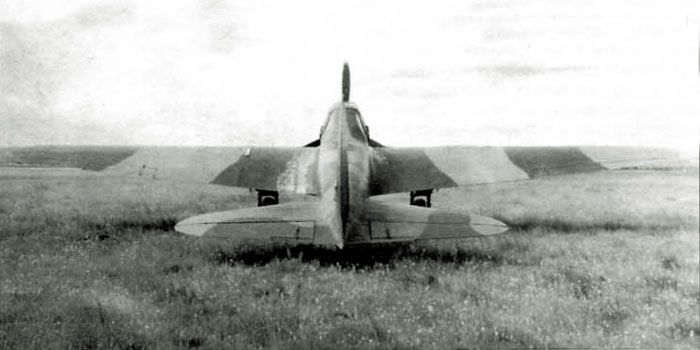
The camouflage pattern of this plane is closely resembling to that utilized in Z.30 and, for a brief period in July 1941, in Z.18; probably all them are interpretations of the sketch included in the NKAP directive of June 1941 about planes camouflage.
That sketch didn't show the right side of the fuselage; so, while usual planes of z.30 had symmetrically painted fuselages, this one looks strongly asymmetrical, for what one can see on the photo from the rear.
No any photos of other wartime Il-2s seem to present all these characteristics on the same plane; it is very possible that images of planes built in Z.381 do exist, but that are misidentified as planes of mid 1941 or built by other factories.

A reconstruction of this plane.
Click on the profile to see a 3 views drawing.


